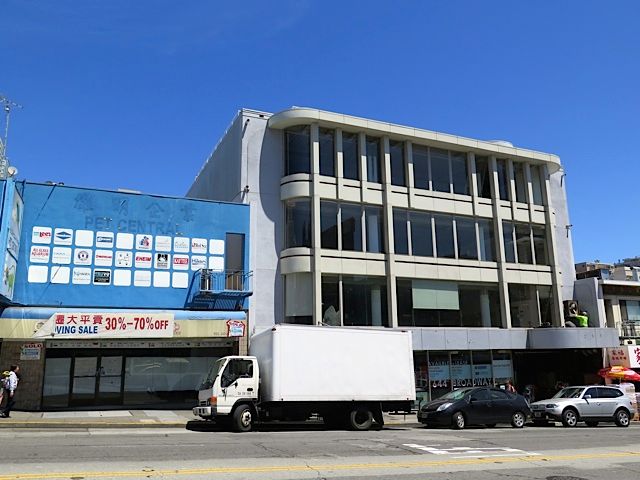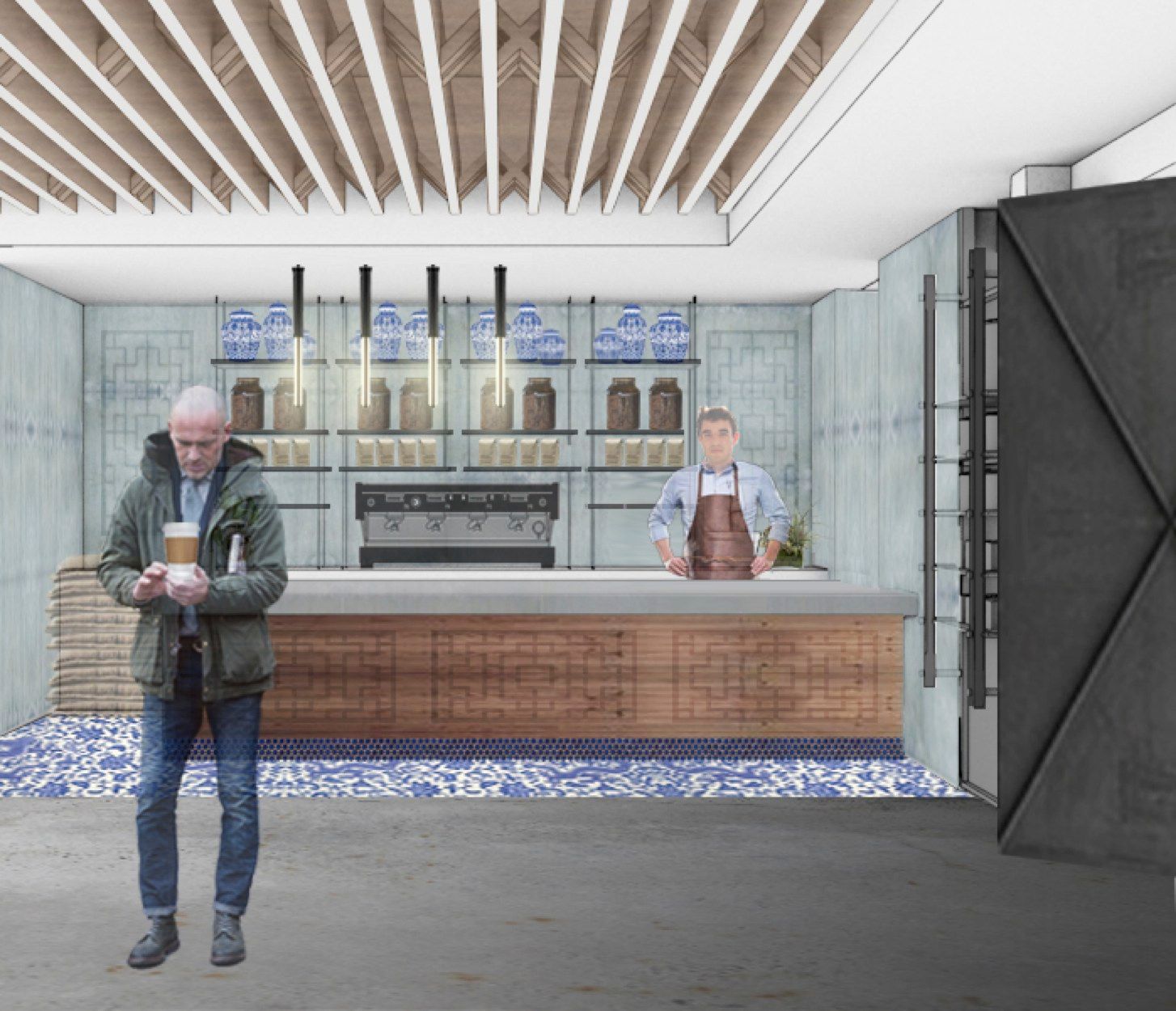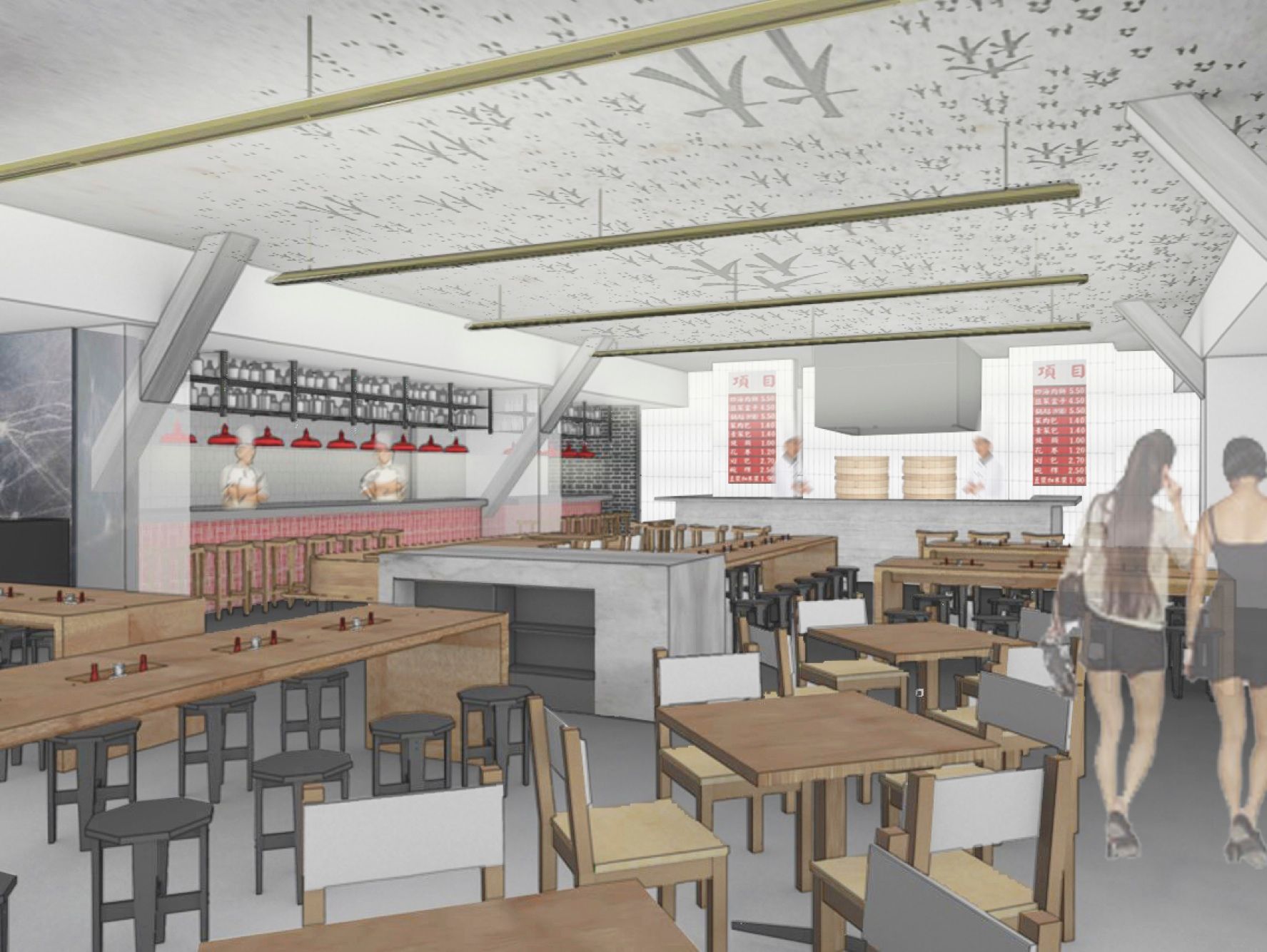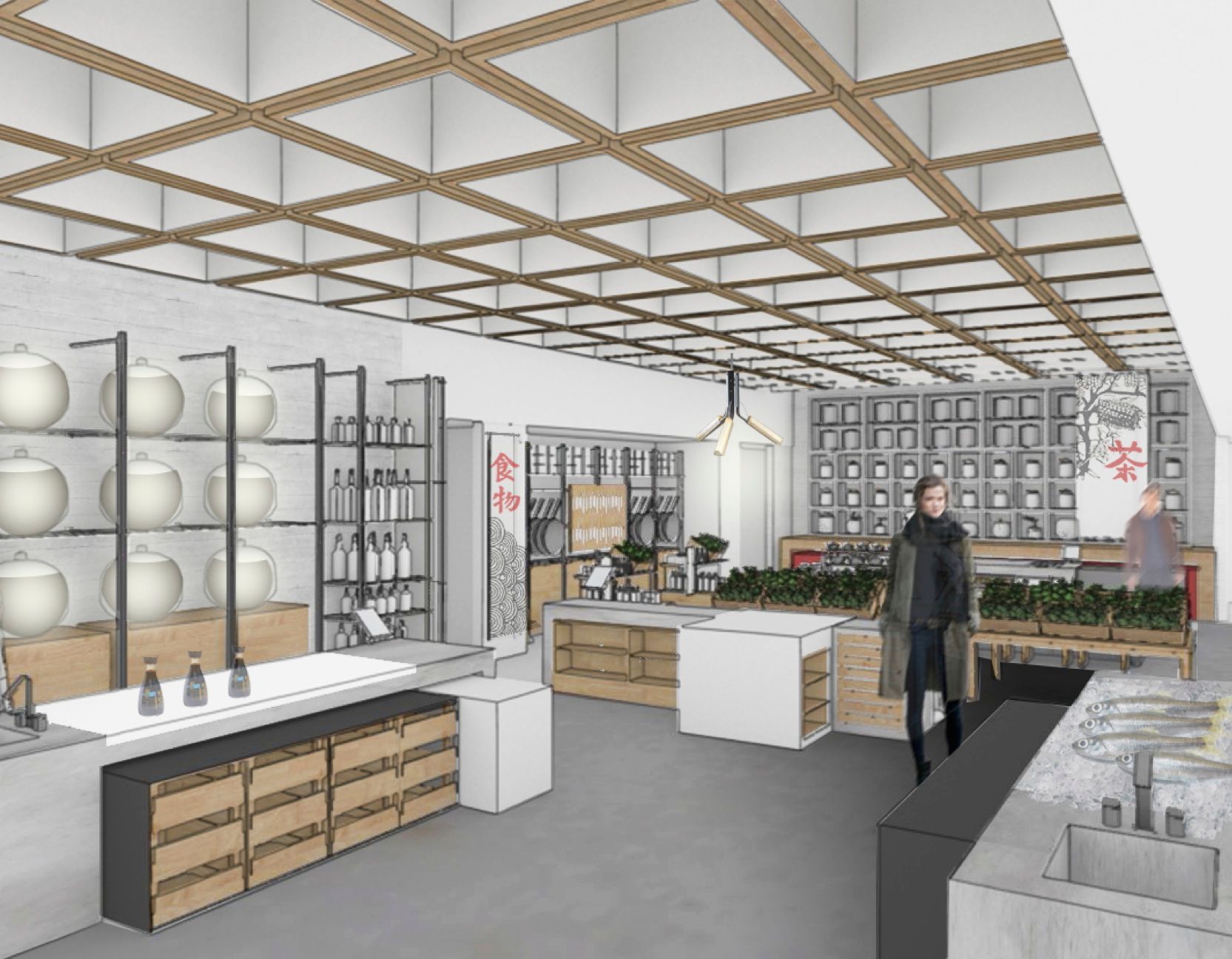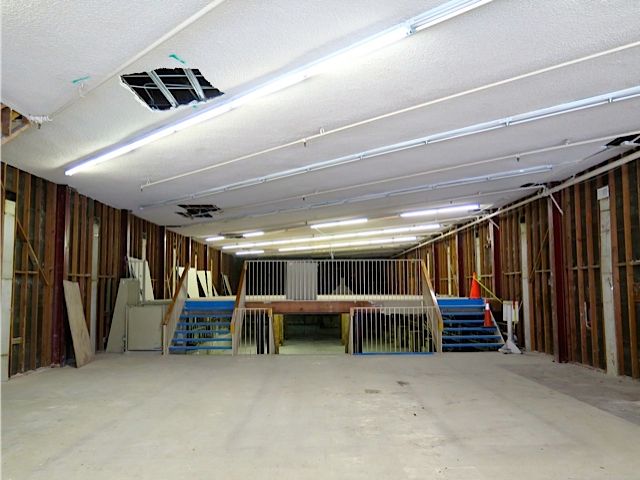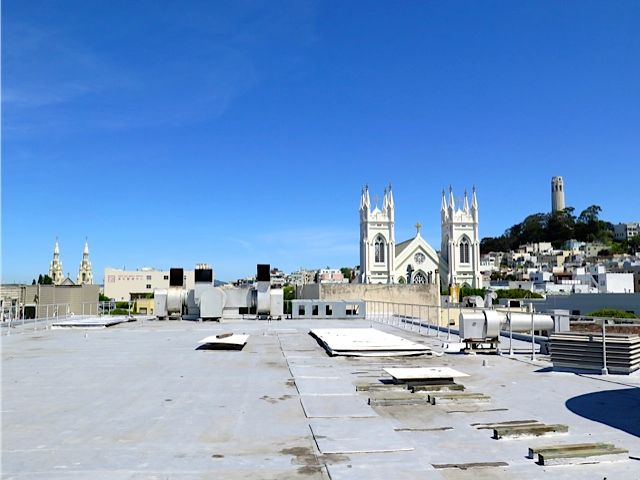Yesterday I took a jaunt to Chinatown to meet with part of the CHINA LIVE team (which included founder George Chen, managing partner Richard Miyashiro, director of programming and corporate communication Janine Shiota, and director of marketing Doug Collister) to tour the space and hear more about the plans for the former Gold Mountain at 644 Broadway (you can read our previous piece here). The steel and concrete building was built by architect Philip Choy in the 1980s as part of a reimagined Chinatown and was a bit controversial at the time—I used to call it the Blade Runner dim sum house.
It’s an enormous project—20,000 square feet—and the goal is to open in time for Chinese New Year (February 2015). A big piece of exciting news: the talented AvroKO firm will be the designers of the project. (Locally, the creative New York-based firm has designed RN74 and The Thomas at Fagiani’s in Napa.)
China Live has multiple floors and components, so let’s walk through it. The 7,000-square-foot ground floor will open up into a 28-seat café area in the front, with a counter for ordering tea, coffee, pastries, and small bites. Farther back will be the main China Live Market-Restaurant’s seating area (which can be configured for larger groups) with table service, about 150 seats in all. For the tech-oriented, you’ll be able to reserve a table, preorder from any of the exhibition kitchens, and settle up the bill via your phone. (Or you can do things the usual way!) The space will have a look that is modern and warm, with lots of wood and some unique touches, like a tiled floor reminiscent of Chinese blue-and-white porcelain.
All the various stations of the exhibition kitchen (five in all) will be in the far back, ranging from a roast meats and charcuterie station (with its own takeout window) to steamed dim sum, a noodle bar, a seafood and raw bar, and a rice table with seasonal vegetables (there will also be some counter seats overlooking various stations). The cuisines offered will span Greater China, and will be prepared with sustainable, organic ingredients.
The 5,000-square-foot retail market will be going into the former pet store that flanks the building (660 Broadway)—you can enter it from the street or from the restaurant. It will have a serene look, with an earth-toned palette of wood, clay, ceramic, and concrete. There will be opportunities to taste and learn (and buy) all kinds of products, from tea to soy sauce to condiments, plus there will be cookware, cutlery, recipe stations, dry goods, and more. If you happen to love the chile sauce you had with your lunch, your server will be able to get you a jar and add it to your tab.
This retail portion is not going to be designed to just appeal to tourists who want to bring a wok home from their trip to SF; it’s meant to really be a bridge to understanding Chinese cuisine more deeply, providing information to locals and visitors alike—including how to season that wok. The team is looking at themselves as ambassadors of Chinese cuisine, and want to help diminish some of the mysteries surrounding it. Demos, classes, and videos will play a part in the experience, and look for a very engaging team that will walk you through the space and explain things fully.
The team took a research trip to Asia (four cities in two weeks), including Shanghai, Taipei, Hong Kong, and Singapore, with Cecilia Chiang in tow. They found a lot of inspiration for signage, graphics, and visuals that will be reflected in the design, and of course in the dishes.
On the second level is going to be Eight Tables by George Chen, a reservation-only, destination restaurant, which can be accessed through a back-alley entrance. There will also be a bar and lounge that will overlook Broadway (with room for 40); Chen explained it will evoke a Shanghai experience (more on that soon), and I was excited to hear they are going to be bringing a retro 1970s-1980s aesthetic to life to match the building (not cheesy though—think more chrome and padded chairs).
Farther back will be the Madame’s Parlour, which will function as the private dining room (48-50 seats), and will also handle overflow for the lounge—it will be a flexible space, with banquette seating around the room. There will be more classic Chinese elements, like a chinoiserie fireplace panel, lots of jade green tones, and Chinese vases.
In the far back will be Eight Tables, which will have a sophisticated and monochromatic, cream-toned palette. Some renderings showed wall treatments that were evocative of Chinese landscape paintings and textiles. The restaurant will have 42 seats total, include 4-6 seats in a demo area of the kitchen. The 12-course menu will be created by Chen, and executed by the two chefs he has hired for the project, who are currently at a fine-dining restaurant in Shanghai (one will be chef de cuisine, and the other will be a senior sous chef)—both are in their early 30s and have spent their entire lives cooking. Chen said they are going for a Michelin star rating with the project—he said the dishes will be superfine, with the best sourcing or very rarefied ingredients, and seasonal ones too. There will be two menus: one will be classic and the other will be more innovative, but both very elaborate. The wine list and service will also be top quality.
There are also plans to eventually open the roof—it has a spectacular view that includes Coit Tower, the Transamerica building, nearby cathedrals, and the Bay Bridge. They need to reinforce it, and will creating a glassed-in area—look for this part to launch after the main opening.
The basement is where the theater is (it has been dormant for 12 years), with room for 250, and there will be a spacious lobby with room for concessions (and food provided by China Live, of course). They are currently determining who the partner will be for theater programming (like an independent film fest), and on the very top floor will be the offices of the San Francisco Film Society.
We’ll be providing regular updates of this engaging project, which is going to be quite the culinary and cultural destination in the heart of Chinatown. 644 Broadway at Stockton.
The entrance to China Live. Rendering: AvroKO.
